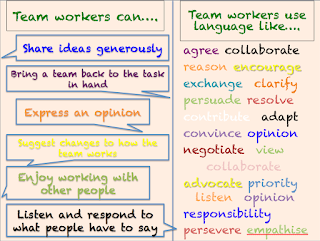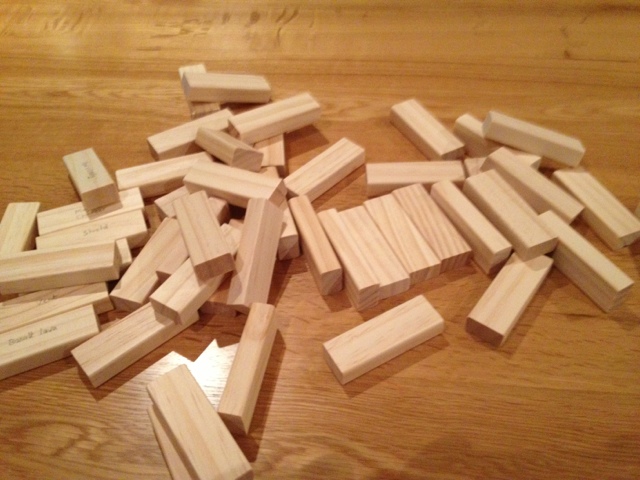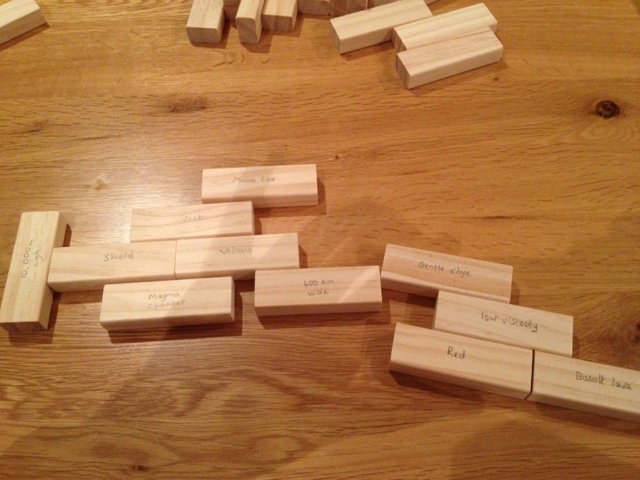I am currently on a massive journey through my mind and with my life. I am making huge efforts to improve my learning and teaching.
This post has a wide range of thinking and strategies that have really taken me to the next level. There is nothing ground breaking here. Just many simple strategies that I find work for me. So how have they come about?
It is collection of thinking from a Buddhist perspective that I gained from a programme I watched on the BBC iplayer called;
'Seven Wonders of the Buddhist World'
This is a series of notes taken on my iPhone as I watched the programme. It is a series of things to think about from a Buddhist spiritual perspective for various ways of learning. I am currently really exploring my mind for one reason or another and am going through a real creativity patch I actually put it down to this way of thinking and am going to stick with it for a while and see where the journey takes me. I wouldn't call myself a religious person or a spiritual person but perhaps a
reflective person.
Take it point by point rather than as an overall methodology as the flow could be better! (still working on my writing so bare with me)
The main aim is to
Empower individual learning;
collaboration; reflection, and passing on learning to others to
enlighten.
Buddha created a radical change of thinking. My prompt for you is to mark out
YOUR path to follow for
self revelation. Make it a
rigourous quest to avoid complacency and stale state.
Meditate - think deep on a problem. To enable Enlightenment state don't move from a problem until you have created or thought of a possible solution or range of solutions. Allow students this freedom as well.
Find a place to
reflect it could be somewhere linked to nature such as sitting under a tree to
reflect. Some of you might shake your head at that thought thinking it sounds silly or is a narrow minded negative stereotype of meditation, but I find the rustling of leaves and twigs quite helpful in focussing my mind so I often drive up to Kielder Reservoir to walk, think, plan, reflect. I've found that it is best to find a place that has no emotional connection, which can lead to a clouded mind and lead to many distractions from the focus.
Explore many of us get thinking block. This could be down to simply the place, so get out and about and find your place. It could be somewhere peaceful or somewhere busy and bustling for you to use triggers to connect your thinking to something you see to make parallels with.
Go back to that spot to remind you that you came up with an idea there to physiologically train the mind that this is a thinking spot where successes are born. Let students discover physical places that work for them. Let them explore. My place is virtual I find I am most creative on twitter between 6pm-3am (a big window to fuel my insomnia)
3 jewels of life:
1. Buddha founder -
The Big Picture / Idol
2. Community -
Learning community
3. Preaching - S
pread Learning to peers, community the World. - twitter, blog, website, youtube, teachmeets, staff briefing/news, display
An idol - Try to have a trio found this has helped triangulate my thinking to a more solid and deeper depth of thinking. I have a learning trio currently of
David Didau, Alex Quigley and Zoe Elder who I find have had the greatest impact on my teaching and learning.
They could equally be themed so Geographers for me would come from this list everyday of the week as my go to for inspiration. (
The Geography Collective Dan Raven-Ellison, Tony Cassidy, Alan Parkinson, David Rogers, Richard Allaway.
Responsibility
It is important everyone is
Responsible for their own learning. As a teacher I am not
'The Saviour'! Be critical and highlight this to students! They are someone to gain
curiosity from, to ask for
guidance of where to find help i.e resources, peers etc. I say this as many of us have students who rely on us and demand our attention to get an answer or reassurance from. It will enable them to be more independent. But naturally needs strategies to enable this transition. Hence my journey to provide a
learning tool kit for students to access this type of self reflection, reassurance with examples that they can take success criteria / thinking guidance steps from and apply to their own problem.
Having a
themed approach to your lesson can help. For example a task might be to
describe an image. I ensure this is visually and verbally shared with students so they know exactly what it is I am wanting them to focus on. BUT Students may go to their safety net strategy and come straight to you, or their hand fires up and they say
'I can't do it' and as a result demand you feed them the strategy with the pained expression etched across their face pleading with you to put an end to this torture. NO NO NO DO NOT BEND TO THIS!
With the tool kit in place students now follow the following path. 'Ok so the theme is describing a picture. What does the tool kit say about describing a picture? Oh so to be successful I do x, y and z to a picture to describe it. Right now to have a go. I have found if they struggle with this to use the great strategy I got from @dandesignthink of
before you ask me try these first display poster (ask him about it) It has had huge impact on resilience and resourcefulness of my students.
Evaluate
Create
self evaluation learning plans. Be true to yourself of your
strengths and weaknesses. Allow your class this opportunity to. It can be quite eye opening. Then inquire for the strategies the students use to cope when they have the problems. It can be even more of an eye opening as well! Give it a go!! (hint many of mine said it was why I was then naughty in your lesson)
Personal morality
Many Buddhist temples have faces as focal points.
Eyes - teacher role to watch/assess the learning,
not do.
Ears - to listen. I want students to come up with strategies as a community to answer them and for me to lap my room to listen to this learning and then dropping in during a pause to praise good learning and get students to share that with others. I have been inspired by
@RachelOrr to use my ears more and listen. She took time out of her busy schedule and made time for me and just listened. It really helped me. How often do we just sit and listen to students? I bet you learn more from it than preaching at them. So I am making sure I am lapping my room more and more and listening to students both passively (hearing for key words or commands that they use) and actively by sitting or kneeling next to them using good bosy language, a smile and responding to what they talk to me about and then implement some coaching language to help entice out more from them:)
I write down my thinking now and found it really helps
. I got this from @Gwenelope (still dont know her real name!) off twitter a brilliant lady who has helped me hugely. I recently had some help on how to cope with the loss of my dear Father using CBT - Cognitive Behaviour Therapy. By writing a lot of things down I am finding it has untangled a lot of my thinking webs that I have in the past got trapped in. This is taking a lot more time, but I solve my problems much quicker because I am more focussed. Think of it like the Maths concept of show your workings - write your steps down to solving an equation to help train yourself how to apply that skill in the future.
Journey paths to enlightenment:
Chanting - repeating strategies to gain enlightenment to one self's learning and progress.
Earth, water, wind, fire, space, mind into a plan. Is awareness that universe is ideal
Earth - solid aspects to own learning in geography and T&L. (Geography - using description, explanation, investigation, opinion and interdependence across various scales incorporating human interaction with the physical world at the forefront of my learning for geography. T&L - using solo, critique, questioning, collaboration.)
Water - what learning flows well for individuals?
Wind - what blows over you? What do you struggle to grasp / sense?
Fire - what frustrates you most about your learning? Key weakness target.
Space - goal - aspects of awe to you.
Key behaviours:
Karma - emphasis on consequence of actions. How we think and act. Twisted we should think and act (create) to bring about a
consequence/product- to evaluate review.
My room in the past has been messy and still is to an extend I am working very hard on creating an
'awe of class should be full of wisdom and have decadence properties / respected by all who enter'. A place people are proud of and want to enter. So that it hopefully produces positive Karma. So My walls are filling up with breathtaking pieces of learning from students who have taken time and pride in their work.
I want to create this positive mindset in the room of excellence and not mess - It shows I don't care, take pride in my room, myself so why should the students? This is a huge push in my marginal gains for my learning in my classroom. No stone will go unturned to bring about excellence in my classroom from myself and my students. This I believe will lead to greater resilience of learners in my room. I am bringing this about hugely at the minute with my language of choice in describing tasks and expectations.
The minimum is just not good enough.
Allow for
creativity. Artistic (This is a figure of speech it could be
presented from any of the multiple intelligences) work for students to take time and pride and aim for the look at what we have created. Sharing moment that brings me so much pride and love of the job. It happened so many times yesterday from students who normally come into my room and say I can't or give me behaviour gripes. Perhaps the task wasn't outstanding but the learning was breathtaking to me and more importantly to the student who shared.
Large scale (interpret as you might) be big on creativity - take it to next level don't think small think of something that will make people sit up, observe and listen and act.
Sangha -
focus on learning during lessons stay focussed to gain wisdom.
Dharma - to do what you do practically without doing any harm. To try to gain '
Purity of thought' u whilst not restricting others but
aiding others as we're all the salt of knowledge.
Aim to reach enlightenment samsara.
Go through cycles of learning like -
TEEP or the
7e's that @HThompson1982 introduced me to as a planning strategy, until for that specific learning objective you gain enlightenment and can be reborn to focus on the next learning objective.
This is very important in my view. WE MUST Allow students to escape Samsara. We shouldn't think like this:
'ok that lesson is over now, next lesson we are learning this, here are the next set of objectives' when students haven't achieved their last set of objectives! This will only create frustration and student behaviour of
'I can't do it' because the goals are
'too big' in the
time frame for them to achieve and so they gain a
defeatist attitude. We keep hearing it but
PERSONALISATION of learning really is key. This could be targeted for specific students. But don't make them too easy, allow for that strive, that challenge that is achievable but only through real drive and ambition. But the most important aspect is that your planning allows the suitable
TIME TO ACHIEVE. I have found having 4 core objectives over a number of lessons works for me where problems individual students have get posted on post it notes on a wall that during that objective cycle directly relates to that specific objective. Students write their name on the post it note and if I student is in a thinking and learning place to tutor that student out of their problem then they go and collect the post it, go over to the student and help. So objectives become problems to solve for all and become opportunities for people to collaborate, help and solve.
Samsara can also be thought of to examine the daily life around us. To review the
passions, desires and
destructions of
everyday life. And reflect how these conflicts can come to Nirvana -
peace.
This has been key to me. I have been so angry lately from those who I have told or have read about my past. I have been working on this hugely and I am making massive strides with it. A direct correlation with myself being more at peace with myself that my teaching is going to new and improved places. Mainly due to the great learning I am reading on twitter, blogs and books people mention.
The main message I would like you all to take away from this post is to:
- REFLECT
- FIND YOUR OWN JOURNEY
- ENLIGHTEN
The next bit will be ramble as I try and form it in my mind so bare with it:)
Cambodian Buddhism is to take a more human face. Be humble
reflect look at
different views / opinions, have different temples - seeds for thought. Reflect on destruction around us the fragile nature of the world around us reflected in the temples that are crumbling empty now like areas that are affected by war, natural disasters, poverty etc and see the liberation that occurs in the time after.
Areas that are good to meditate according to Parli Cannon:
'Mountain, hill side, open field, forest cave, root of tree' - this highlights as geographers we have to explore visit to meditate allow the human mind to explore and to transcend the world around us and not be happy to just read about these things.
Also from Ankor Wat explore drama (re-enact scenes, role-plays, future) the dramatic lives that exist around us and not to limit where we examine. Apply on a monumental scale. - pass on experiences to parents, friends, other schools the community, other countries through blogging etc. So the Power and wisdom of what we learn / experience is available to all.
Zen - Qualities are not just unique to me. Explore - Discover - Share - Teach - Coach - Pre-structural - Multi-Structural - Relational - Extended Abstract by seeing how others take the learning.
I hope this helps your thinking:)






































